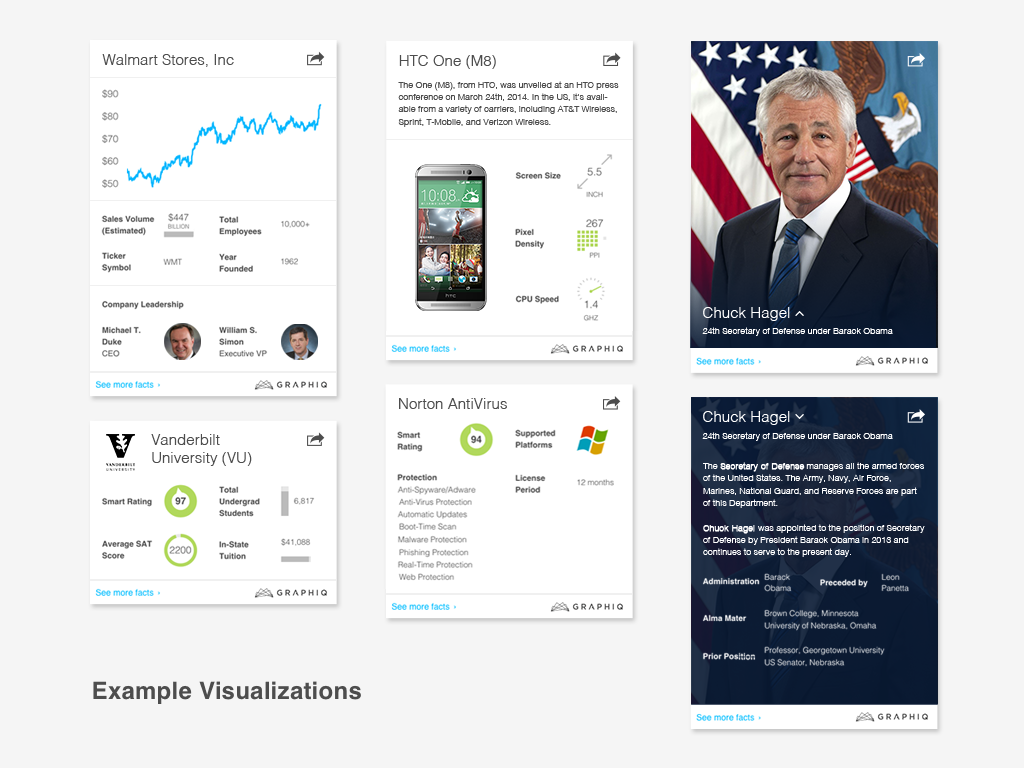Visualizing the World’s Knowledge
While this does simplify things, these six types still look pretty different in nature (especially if you take into consideration the wide range of topics we cover). So we further break it down into different components that can be used within these visualization types:
- Title
- Data Table
- List
- Image
- Chart
- Tabs
- Sections
At this level, we’ve found that we don’t actually have that many components to design for. Of course, we still have to handle the extreme cases for each of these components — short titles or abnormally long titles, tables with one data point or 100 data points, a low-quality photo or a vector image. But even so, breaking things down made the solution seem much more manageable, and this list served as a guide when we made our design system later on.
Flat on a White Card
At Graphiq, we generally take a minimalistic approach to both design and development. We care about the simplicity of our codebase, and we strive for solutions that are wildly scalable. Looking at the list of components, it’s clear that we don’t need a complicated system to handle multiple layers of information. While the content itself can drastically vary, the information architecture itself is rather simple.
For maximum adaptability, we eschewed borders wherever possible, and because these units are vessels for delivering knowledge, we really wanted to let the information do the talking and eliminate any extra UI. What we ended up with was a modern, flat design.
Considering the nature of flat design, we wanted to avoid completely blending in with surrounding content–it was important that our visualizations stand out. That said, having a colored background was not an option because it needs to be compatible with all the content we might ever display. Therefore, we decided to implement the card metaphor to help it pop out from the content flow:


Grid System and Building Blocks
With a defined style and a blank card, we moved on to creating a grid system and the building blocks for the content. This isn’t too different from building something with Legos: we need a grid system to make sure all the blocks are compatible with each other, and then we need a small list of building blocks that can be repurposed. From those, we can create infinite combinations to suit our needs and convey massive amounts of information.


Here’s an example of the first batch of blocks we supported:


With just those building blocks, we can create a ton of different visualizations.
Here’s a quick GIF showing how we assemble those blocks into a visualization about Walmart Stores, Inc.


More examples we created with our first batch of blocks earlier this year.


Scale
As the list of blocks kept growing, the number of possible combinations grew exponentially. We now have more than 20 different blocks that we’re using to create thousands of new Graphiq visualizations each day.
